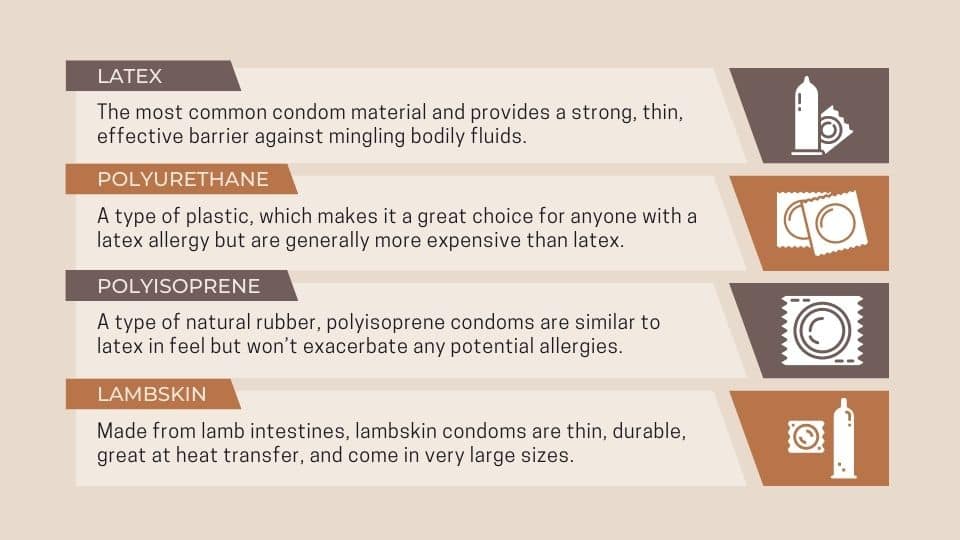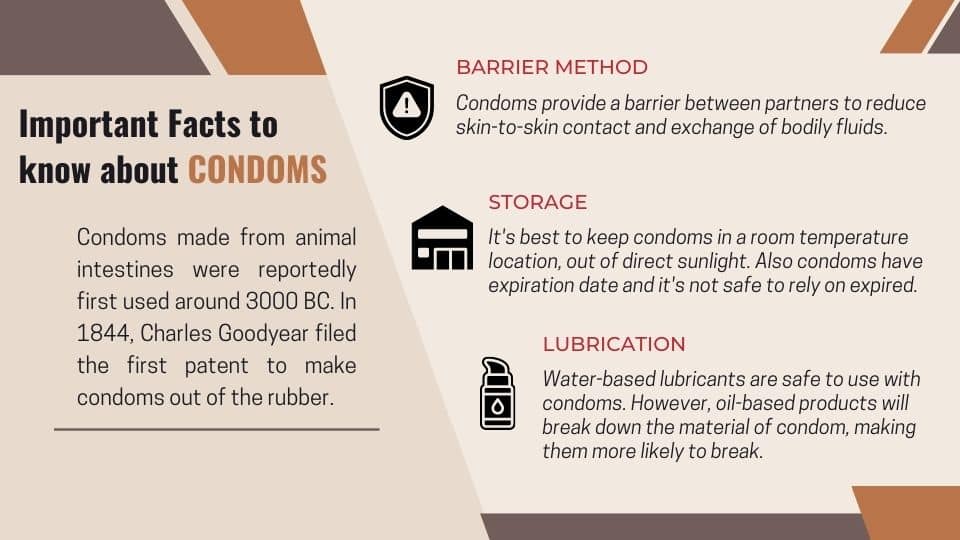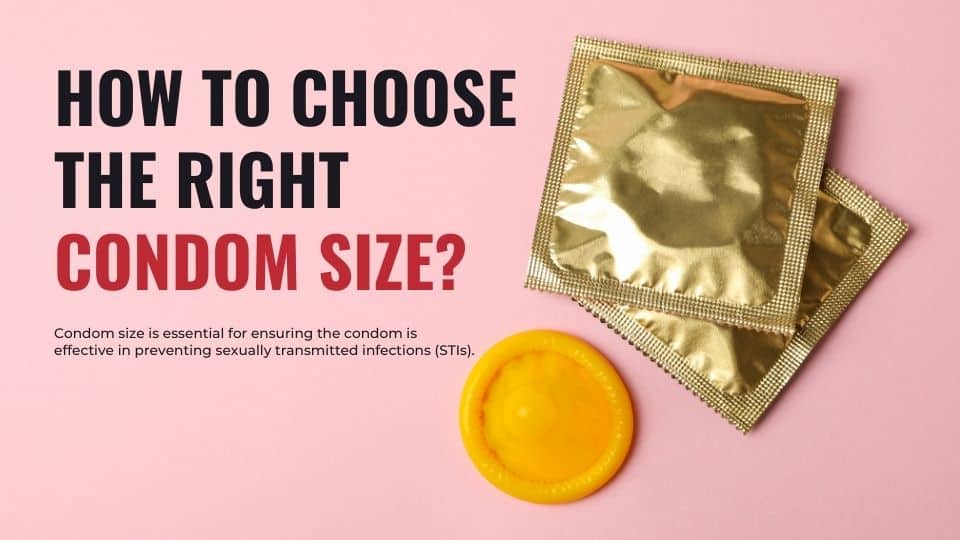Discover the importance of choosing the right condom size for comfort and effectiveness. Learn about different sizes, how to measure properly, and tips for finding the perfect fit to enhance your sexual experience and safety. Condoms are protective barriers that fit over a penis or other phallic-shaped object. When used properly, condoms lower the chance of pregnancy and dramatically reduce the risk for both parties of contracting a sexually transmitted disease or HIV infection.
Condoms are considered a class II medical device, meaning they follow specific guidelines outlined by the Food and Drug Administration.
How to find the right condom size
Condom size is essential for ensuring the condom is effective in preventing sexually transmitted infections (STIs) and pregnancy.
Condoms that are too small may break, and condoms that are too big can slip off the penis. Poor-fitting condoms can also feel uncomfortable during sex. For the most comfort and protection, external condoms should be the proper size.

External Condom Sizes
External condom manufacturers use slightly different terms to describe external condom size. This can make selecting the right size a challenge.
As is often the case with clothing, one brand may call an external condom a large size, while another may label an external condom of the same measurements as a standard size.
When comparing external condom brands, keep your length and width measurements in mind. You will need both.
External Condom Width
External condom width is important to consider because it affects how well the external condom stays on. Additionally, an external condom that is too tight can be uncomfortable and may easily break.
For external condom width, use these general guides:
Condoms – Width/Inches
- Standard External – 1.75-2.00
- Snug External – under 1.75
- Large External – over 2.00
External Condom Length
Length is also important because the external condom should cover your whole penis and leave space for your ejaculate.
For external condom length, use these general guides:
Condoms – Width/Inches
- Standard External – 7.25-7.80
- Snug External – 7.00-7.80
- Large External – 7.25-8.10
How to measure and choose the right Condom Size
The first step to finding the best condom size is to measure the penis. To do this, a person can use a ruler, measuring tape, or piece of string. For the most accurate results, they should take the measurements while the penis is erect.
Use the following steps to take an accurate measurement of the penis and find the best condom fit:
- Measure the length from the base of the penis, where the penis meets the pelvis, to the end of the tip.
- Use a piece of string or a flexible measuring tape. Wrap it around the thickest part of the penis, which is usually near the middle of the shaft. If using string, mark where the string crosses and measure the distance with a ruler.
How to measure a penis: step-by-step instructions
Step 1: Stand tall! – For accurate measurements, make sure your penis is erect.
Step 2: Measure length – Place your measuring tape against the pubic bone (where the penis meets the body) and extend it to the tip of the penis.
Step 3: Measure girth – Using either a flexible measuring tape or a piece of string, wrap it around the thickest part of the penis shaft. That’s the girth measurement.
Step 4: Converting girth to width – If you divide penis girth by pi (3.14,) you’ll end up with penis width.

What’s the difference between condom types?
While knowing the size you need makes condom shopping a lot easier, there is still an overwhelming of condoms. The main decider here is condom material, which affects the feeling, effectiveness, and cost of any condom.
Latex condoms
Latex is the most common condom material and provides a strong, thin, effective barrier against mingling bodily fluids. However, latex does not transfer heat very well. Also, it goes without saying that anyone with a latex allergy should definitely pass on these condoms!
Polyurethane condoms
Polyurethane is a type of plastic, which makes it a great choice for anyone with a latex allergy. Polyurethane condoms are generally more expensive and looser-fitting than latex, but they offer better heat transfer and a thinner barrier.
Polyisoprene condoms
A type of natural rubber, polyisoprene condoms are similar to latex in feel — but won’t exacerbate any potential allergies. Thicker than polyurethane but softer than latex, polyisoprene condoms hit a great middle ground between durability and optimum sensation.
Lambskin condoms
Made from lamb intestines, lambskin condoms are thin, durable, great at heat transfer, and come in very large sizes. However, although lambskin condoms are made from natural materials, they are also expensive, and do not protect against STIs, making them a niche pick best for monogamous couples.
Extra condom features
While marketing terms like “Fire & Ice” may sound silly, extra condom features can be a huge turn-on, given the right context.
Textured condoms
Condoms with ridges, studs, ribs, or other added textures can be great if you want more friction during penatrative sex. When using textured condoms, be sure to use additional lube, as extra friction can quickly turn to extra irritation if things get too dry.
Flavored condoms
Fun condom fact: many condoms (and their lubes) taste terrible. If you want oral sex on a phallus without the risk of STDs, STIs, or a bad taste, a flavored condom is an easy fix! Many brands offer organic and vegan flavors that taste great.

How to use a condom properly
The last thing you want is for your condom to get in the way of your good time. As long as you follow these basic guidelines, you’ll be sure to avoid breaks, spills, slips, and the dreaded inside-out moment.
- Condoms are most effective when used correctly. Use the following advice on how to use a condom properly:
- Check the expiration date on the package. A condom past its expiry date is less effective and more likely to break.
- Make sure the condom is still intact. Condoms that people may store in wallets or purses can be damaged. Make sure the wrapper is intact. If the condom itself is torn or shows signs of damage, do not use it, and discard it immediately.
- Carefully open the wrapper. Avoid using teeth or ripping the package forcefully, as this can tear the condom.
- Make sure the rim is facing the outside so that it is possible to roll the condom over the penis.
- Pinch the tip of the condom and place it on the head of the erect penis. Pinching the tip removes excess air and allows extra space at the top to collect semen.
- Roll the condom down the shaft to the base of the penis.
- If the condom does not have lubrication, apply a small amount of water- or silicon-based lubricant to the outside of the condom.
- Lube that condom!. Condoms create a lot of friction during sex, especially if they’re dry. Too much friction can be unpleasant and can lead to the condom coming off or tearing during use. If your condom isn’t pre-lubed, add your own!
- After ejaculation, hold the base of the condom while pulling out. Doing this will prevent it from falling off.
- Carefully remove the condom, tie a knot at the open end, and throw it in the trash. Condoms are not reusable or recyclable, so after a job well done, they must be thrown out — but toss them in the trash can, because they’re also not flushable!
References for Condom Size
Grove’s guide to natural condoms: How to pick sizes, materials, and more for the best sexual experiences.
- grove.co/blog/how-to-pick-condoms#71Te57nLxWvw8q5N1d6017
How to find the right condom size
- bedbible.com/condom-industry-statistics/
How to Determine What External Condom Size You Need
- verywellhealth.com/what-condom-size-do-i-need-906651

